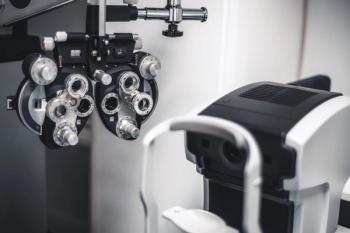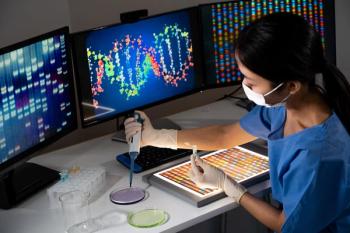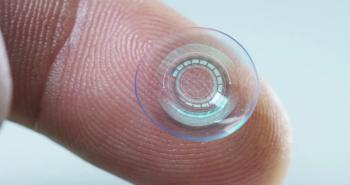
Visual-field test defects appear when ill-fitted face masks are worn
Disease-progression artifacts are most prevalent in glaucoma patients
Results of a new study determined disease-progression artifacts may appear during visual-field tests—particularly among glaucoma patients—when unfitted face masks are worn.1
Background
Researchers reported medical tape worn on the bridge of the nose could reduce these mask-related effects and improve the accuracy of tests during the novel coronavirus 2019 (COVID-19) pandemic.1
"If the progression is real, we need to increase glaucoma treatment," says study coauthor Francisco Munoz-Negrete, MD, PhD, of the University of Alcala in Madrid, Spain, in a statement. "It's very important to avoid displacement of the mask or fogging the lenses that could produce false defects."
More than 300 visual-field tests, performed with a face mask, were reviewed as part of the study. They were then compared to tests performed before the COVID-19 pandemic. Results show most patients were previously considered stable and hadn’t had significant changes in intraocular pressure or retinal nerve fiber layer thickness.
In those cases where pseudoprogression due to mask artifacts was suspected, the research team scheduled new appointments for repeated visual field tests in order to check if the suspected defects disappeared.
All test conditions remained the same except for the masks, which were changed to fitted surgical masks with medical tape placed on the bridge of the nose. Additionally, the mask was placed as low as possible on the nose, and the entire top was covered in tape to prevent movement or fogging.
Results
In total, 18 eyes from 12 patients, or about 6%, were found to have pseudoprogression due to masks. In all of them, the use of surgical tape for precise fitting and fog reduction significantly improved the visual field index and mean defect count. No significant differences were found in the 18 pre-pandemic and pandemic tests with fitted masks.
"Steaming of the lens could cause the patient to miss test points that they otherwise would have seen," says Andrew Tatham, MD, MBA MBChB, FRCOphth, FRCS(Ed), FEBO, of Princess Alexandra Eye Pavilion in Edinburgh, Scotland, in a statement. "A poorly fitted face mask may also rise up to obscure part of the vision during testing."
The interior field was most affected, and the central and paracentral areas were sometimes affected when a patient wore an unfitted mask, which showed up as a new blind spot or an extension of a previous defect.
Study authors note that some patients also described discomfort with wearing a mask and felt shortness of breath while performing the visual-field test, which could lead to fatigue and false defects, particularly in older patients. They suggest ODs consider using paper surgical adhesive tape and surgical masks to garner the best results on visual-field tests during the pandemic because the hypoallergenic, latex-free tape adheres to skin and leaves minimal residue.
"It is important that clinicians are aware that poorly fitted face masks can cause apparent defects on visual field testing, which unless recognized, may lead to patients being falsely assumed to be progressing,” says Dr. Tatham.
OD weighs in
Optometry Times® asked Chief Optometric Editor
“When an ill-fitting face mask is worn, a visual field defect would most likely be an unintended effect from the frame of the mask,” says Dr. Casella. “Combine this scenario with a pre-existing visual field defect, and the result could be an accentuation of an existing field deficit.”
Reference
1. Gómez Mariscal M, Muñoz-Negrete FJ, Muñoz-Ramón PV, Casanova VA, Jaumandreu L, Rebolleda G. Avoiding mask-related artefacts in visual field tests during the COVID-19 pandemic. Br J Ophthalmol. 2021. doi:10.1136/bjophthalmol-2020-318408
Newsletter
Want more insights like this? Subscribe to Optometry Times and get clinical pearls and practice tips delivered straight to your inbox.















































